- Home /
- All about different embroidery fabrics
All about different embroidery fabrics

The Embroidery magazine asked me in 2021 to share my experience and knowledge in the field of embroidery with the readers. Because not everyone reads the Embroidery Sheet, I'm going to share all that useful information with you too!
In this first Info-blog I want to talk about embroidery fabrics. There are so many that sometimes you can't see the forest for the trees.
If you are just starting to embroider as a child or novice embroiderer, you usually embroider on the "easier" fabrics. In the eighties I mainly embroidered with wool on coarse canvas and later always on cheese linen.
Aida
Aida is also easy to embroider on. This is a cotton fabric that is woven in “blocks”. You make the crosses over a block.
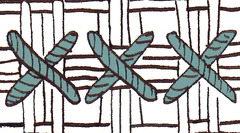
This is easier to see and count than the so-called “evenweave” fabrics, where you make the crosses over 2 threads. Aida is also available in many craft stores. Usually only in dull white. At Soed Idee I have Aida fabrics in different sizes and colours, such as Vintage with a somewhat mottled color, Rustico or Oatmeal which has a slightly mixed oatmeal color and even a linen Aida in the typical flax color.
Evenweave
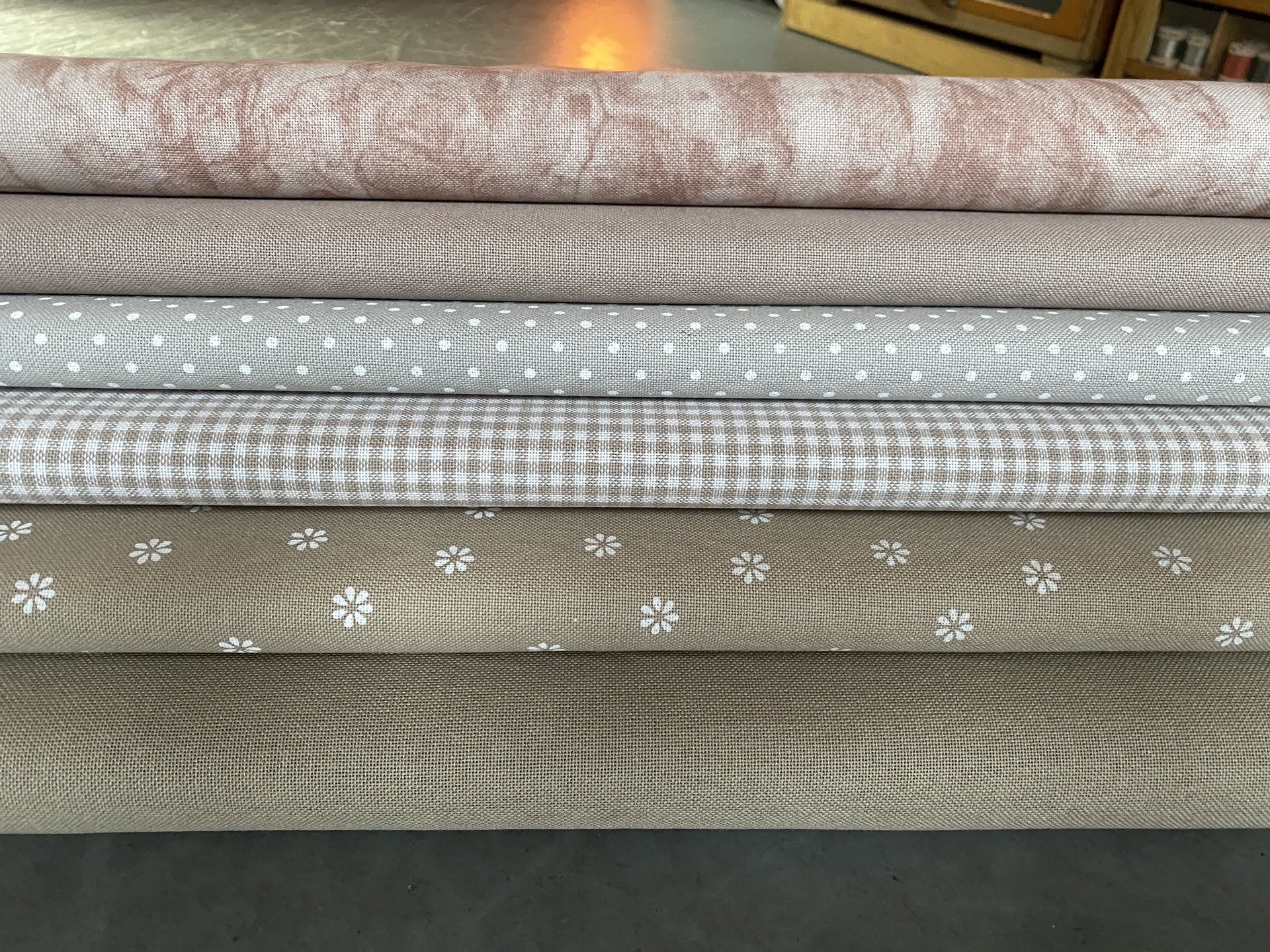
There are various “evenweave” fabrics, such as Jobelan or Lugana. These are fabrics made from a cotton blend. The thread is a bit smoother and completely even, creating a tight, regular weave. Every cross on this fabric is the same. You normally embroider over 2 fabric threads, which is a bit more difficult to count than Aida's blocks.
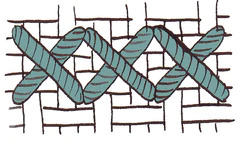
Evenweave fabrics are also very suitable if you want to embroider “1 over 1”. You then embroider with 1 thread of yarn over 1 fabric thread of the fabric. This creates tiny crosses. This is often done with the very large embroideries.
Evenweave fabrics are available in many colors and various sizes, but not very fine. A single evenweave fabric comes in 14 threads, but usually in 10, 11 or 12.6 threads.
Linen
Linen is woven from flax. This is a 100% natural fiber with a somewhat irregular structure. The wire is sometimes thicker or thinner. As a result, the linen fabric is also somewhat irregular. Some people hate linen for that reason, but I just love it. It gives a somewhat "antique" look to your embroidery.
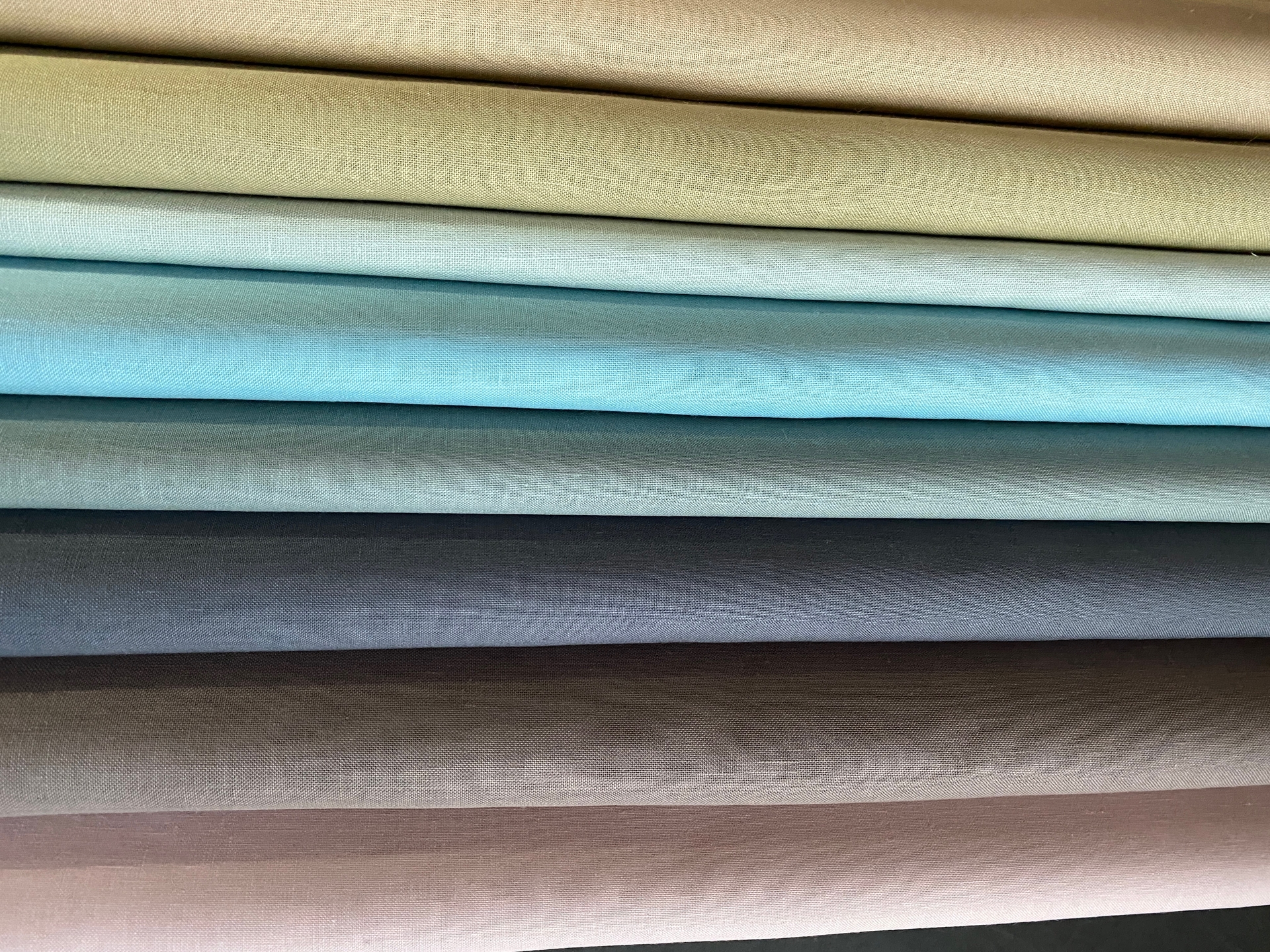
Linen is available in many colors from 7 threads per cm to even 22 threads per cm. The very coarse 7-ply linen looks like a kind of “jute” and gives a tough, robust look. The 22 ply linen is used more for the “free embroidery”, but I have customers who even embroider crosses on it!
I mostly embroider on 14 and 16 threads of linen, because I like to work with 1 thread of yarn. I also like that nice look. Luckily I can still see it clearly!
When I put together ideas for the designs of Soed, I almost always use 12.6 threads of linen. This is the most common and available in most colors.
Hand dyed fabrics
There are also beautiful hand-dyed fabrics. These are ordinary embroidery fabrics that are given an extra dye bath, resulting in the most diverse colors. This can be very intense with even multiple colors in one fabric, but also a bit more subtle, creating a beautiful cloudy effect in the fabric. I really like the latter category myself. Dyeing also makes the fabrics wonderfully soft and it really is a joy to embroider on this. The disadvantage is that it does have a nice price tag…
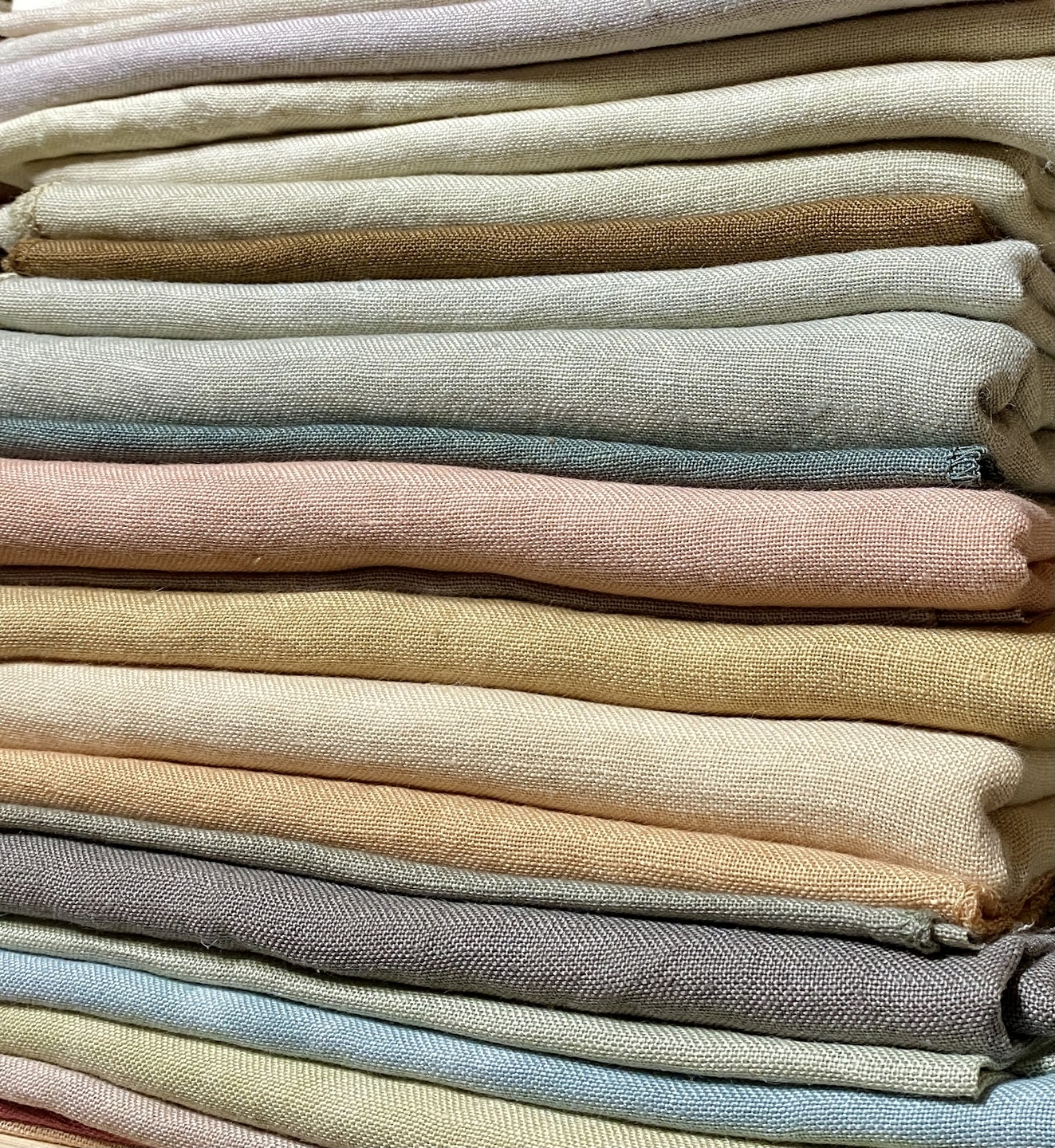
What makes it even more complicated is that there are many different companies that dye the fabrics and then you also have every color in 11, 12, 14, 16, 18 etc thread linen and sometimes also in evenweave or Aida. It is impossible for a retailer to have all this in stock. But I have built up a nice assortment at Soed Idee. A lust for the eye!
What are counts?
If you ever embroider foreign patterns, you have undoubtedly come across it: for example, the recommended fabric should be “32 ct”. But what does “ct” actually mean?
“Ct.” is the abbreviation of “count”. Indicates the number of threads per inch. An inch is 2.54 cm so 32 count is (32 : 2.54) 12.6 threads per cm.
Attached is an overview of the most common counts:
(Click on the image, print the list and hang it on your bulletin board).
Calculate the correct size of the embroidery fabric
Because a lot of people struggle with calculating the correct size of the embroidery fabric, my husband has made a "Fabric Calculator" that can be found on the Soed Idea site.
If you enter the number of crosses of your embroidery here and select a fabric, the calculator will calculate the exact size of your embroidery and the required amount of fabric. It is the most visited page on my website and I always use it myself!
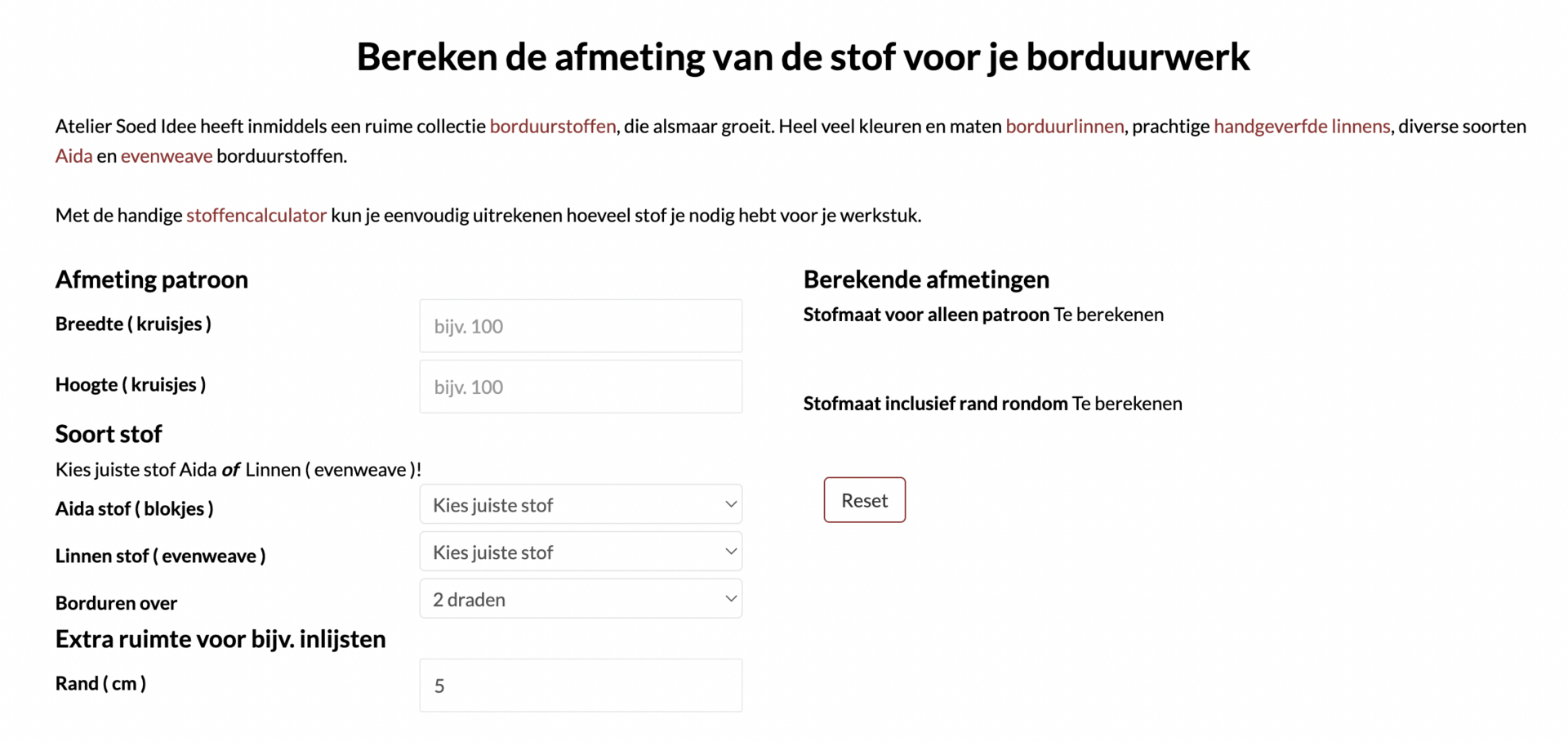
1
1
1
1
20
20
Wat informatief Simone. Dank.
Dankjewel, dit word heel interessant voor ons 😍
dank je wel voor de uitleg. Ook heel veel keuze in verschillende kleuren.
Ik ben het helemaal eens met Debbie en Yolanda want zeker voor de beginner is het lastig kiezen als je niet precies weet wat voor stoffen er zijn.
Ik kwam al op hetzelfde idee als Yolanda (31-7-2022). Een 'stalensetje' van bv 3, 5 of 7 stalen zou erg fijn zijn. Fijn wanneer je zoiets zou kunnen selecteren en bestellen op de site. Handig om thuis bij de hand te hebben, dat besteld veel gemakkelijker.
Dank je voor deze uitleg,
Is het misschien een idee om een soort proef pakketjes te maken, zodat je uit kan proberen of een bepaalde stof je bevalt om te borduren?
Fijne uitleg!!
Soed gedaan👌Dank voor de uitleg Simone.
Ik mis nog stoffen Canvas Hardanger
Simpele uitleg, top!
Wat een goed informatief stukje.
leuke informatie.

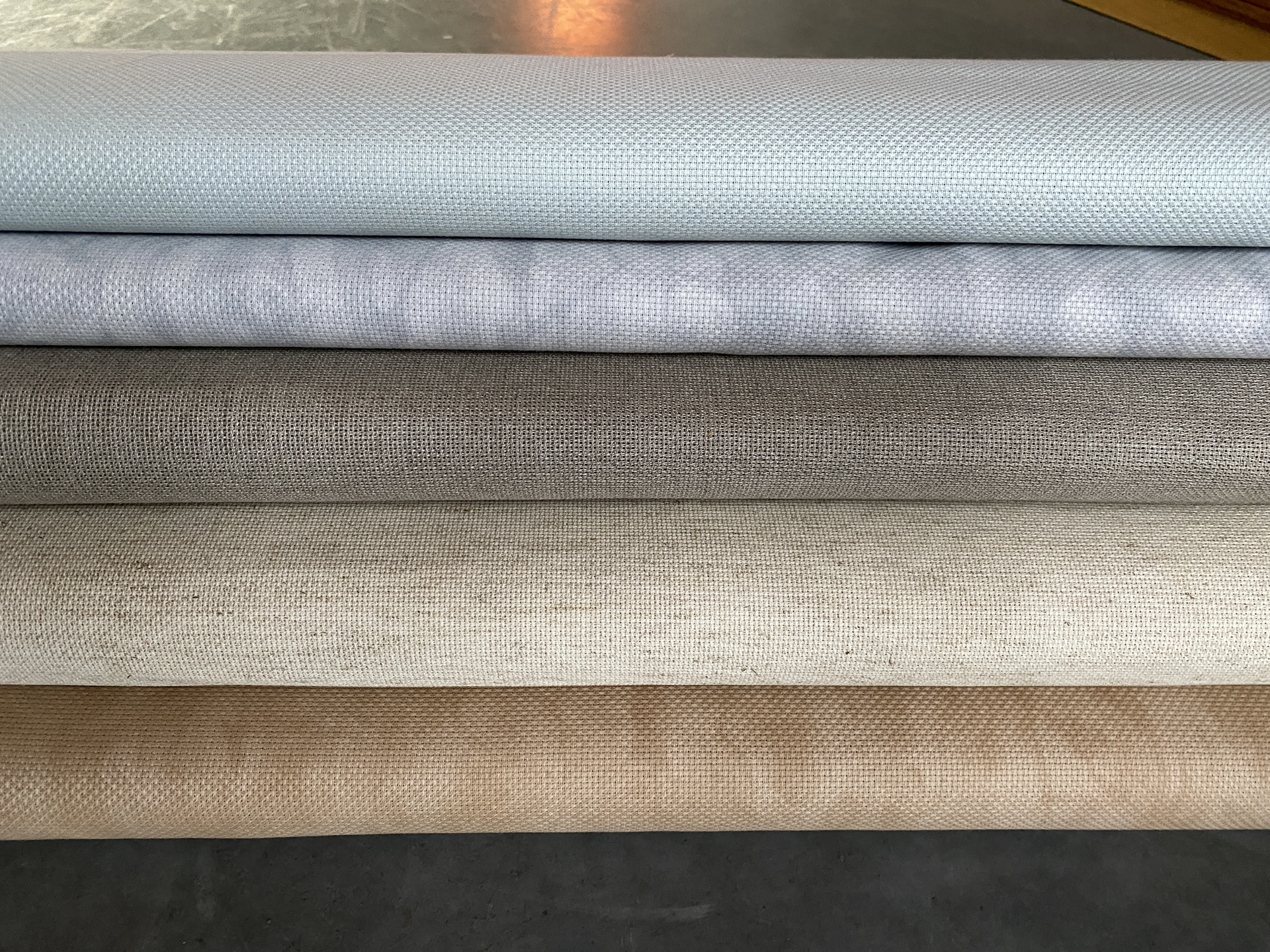

1